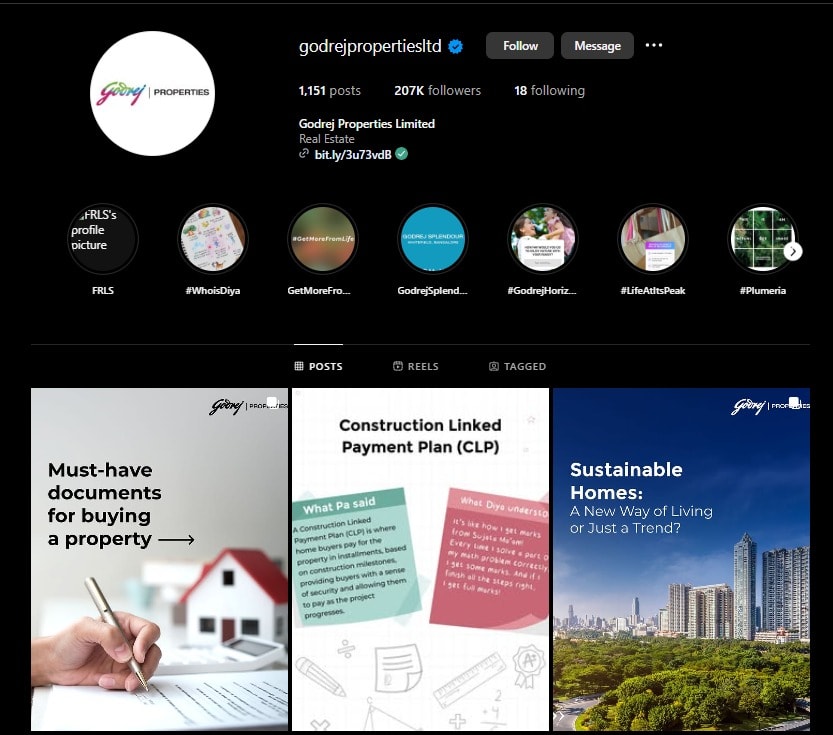
If you’re losing leads, running after people who aren’t serious or just finding it hard to close deals, the problem might be simple: there’s no clear real estate sales process. Things move fast in this industry. If you don’t follow up at the right time or keep track of what each buyer wants, they’ll go elsewhere. And when you’ve got too many things on your plate, it’s easy to forget who you called, who’s visiting next and who’s waiting for a quote.
That’s where a proper sales process helps. It keeps things organised, so you know what to do at each step. Whether you work as a real estate sales executive or manage a team, this guide will walk you through the full real estate sales journey — from getting a lead to what happens after the sale — so you stop guessing and start selling with a bit more peace of mind.
Before jumping into the steps, it’s important to know what the real estate sales process actually means. At its core, it’s just the series of actions you take to turn someone who’s interested in buying or selling property into someone who actually goes through with it. From the first call to handing over the keys, everything counts as part of the process.
It’s not just about having steps on paper — it’s about knowing what to do at each stage so you don’t lose people halfway. A proper sales process gives you a clear way to handle leads, follow up, show properties, answer questions and close deals without scrambling every time. It helps you stay in control, especially when you’re dealing with multiple clients at once.
Think of it as a simple plan. When you follow it, you know where each person stands, what needs to happen next and how close they are to buying or selling. It makes your day easier — and your work more effective.
A proper sales process doesn’t just keep things organised — it directly improves how you work and how often you close. Here’s how it helps:
In short, it makes your work easier — and your results better.
Before we get into the details, let’s be clear on one thing: there’s no one-size-fits-all way to sell property. However, there is a basic flow that most successful real estate deals follow. These steps are not set in stone — but they give you a strong foundation to work with, especially when you’re handling multiple leads or building a team.
Let’s start with the first and most important step — because if you don’t get this right, there’s no sale to begin with.
This is where everything starts. You can’t close a deal unless someone shows interest first. A lead in real estate is anyone who might want to buy, sell or rent property. But not every lead is serious, and not every source gives you the right kind of people. So the goal here isn’t just to collect leads — it’s to get the right ones and keep them coming in regularly.

There are two types of leads: inbound and outbound.
You can generate leads from places like:
But generating real estate leads is only half the job. You also need a place to store and manage them. If you’re scribbling names on paper or using a messy spreadsheet, you’ll lose track. Use a CRM software or any other simple system where you can log every lead, note where they came from, what they’re looking for and when to follow up.
Also, not every lead turns into a sale and that’s fine. The goal isn’t to chase everyone — it’s to build a steady pipeline, so you always have new people to talk to. Focus on being consistent, helpful and easy to reach. That’s how you stay on top of their mind when they’re finally ready to make a move.
Not every lead is worth your time — and that’s okay. Once someone shows interest, your next job is to figure out whether they’re serious, ready and the right fit. That’s what qualifying means: finding out if the person is actually looking to buy or sell soon, or if they’re just browsing.
Start with the basics. Ask simple questions like:
These questions aren’t just for filtering people out — they help you understand what stage the person is in. Someone who’s just starting to look might need time, while someone with a budget and timeline is probably ready to move forward. Based on their answers, you can decide how much attention they need and what to do next.

You’ll also run into leads who go cold, don’t respond or keep changing their requirements. Don’t get stuck on them. Keep them in your system, follow up once in a while, but don’t waste too much time if they’re not ready. Focus your energy on the ones who show genuine interest and a clear next step.
A good way to qualify faster is to use a real estate calling script or checklist. That way, even if you’re having a busy day, you don’t forget the key questions. And if you’re working with a team, it helps everyone follow the same method, so nothing important is missed.
The better you qualify, the less time you waste — and the easier the rest of the process becomes.
Once you know a lead is serious, the next step is getting the property ready — and making sure it looks good, both online and offline. Whether you’re working with a potential buyer or seller, this step plays a big role in creating interest and building trust.
If you’re selling real estate, start with the basics. Make sure it’s clean, presentable and ready for visits. Small fixes like painting, decluttering or repairing leaky taps can make a big difference. Buyers notice these things, and a well-maintained space feels more valuable — even if it’s a modest flat.

Next, take good photos. Avoid blurry or poorly lit shots. Use natural light if possible and show all angles — bedrooms, kitchen, balconies, entrances. If you can, include a floor plan too for commercial real estate. For premium listings, a short walkthrough video or 360° tour works even better.
Now comes the listing. Whether it’s on property portals like 99acres or Facebook groups, your listing should be clear and complete. Mention the location, carpet area, price, amenities, nearby landmarks and contact details. Write it like you’re explaining to a friend — not like a marketing brochure. People are more likely to call when they know what to expect.
Suppose you’re working with buyers instead of sellers. In that case, this step means shortlisting suitable properties and preparing information about each one — so when you get on a call or go for a site visit, you don’t waste their time with mismatched options.
A clear, honest and well-prepared listing builds trust. It gets you better responses, saves time during viewings and makes the next steps smoother for everyone involved.
Once your listing is ready, the next job is simple: make sure the right people see it. In India, real estate marketing isn’t just about uploading property details online — it’s a mix of old-school trust and new-age visibility.
Let’s break it down.
Most serious buyers in urban areas start their search on platforms like:

To stand out there, you need more than just photos. Your listing should include:
Buyers compare 10s of listings at once. If yours feels incomplete, they’ll skip it. Also, refresh your listing regularly. Some platforms push older listings down, so even a small edit every few days can bring it back up.
Most Indian buyers use WhatsApp for daily communication. Whether it’s a forwarded personal property image, a follow-up message or a location pin for the site visit, this is where the real conversation happens.
Tips:
In cities like Lucknow, Bhopal, Jaipur or even parts of Delhi NCR, trust still comes from people you know. This includes:

These methods work especially well for budget residential real estate and first-time buyers, who often rely on family and local agents for advice.
Platforms like Facebook and Instagram help build visibility. But they don’t always bring ready-to-buy leads unless you run targeted ads.
Use social media to:
This builds trust, which is key in real estate as the lead is going to invest a huge amount of money.

If you do run real estate ads, target by location, language and behaviour (people searching for real estate, visiting sites, etc.). Start with a small budget and double down on what brings calls.
In India, buyers often enquire, then go silent, then come back weeks later. Don’t assume silence means “not interested.”
Create a simple follow-up system:
Often, the agent who follows up, not the one who sent the first listing — closes the deal.
In short, marketing in the real estate process is a mix of being visible, being local and being persistent. You don’t need to be on every platform. You just need to show up where your buyers are — and follow through.
Pro tip: If you are looking for tools to streamline your marketing efforts, check out our blog: 31 real estate marketing tools to understand which tools are helpful for which part of marketing.
Once a buyer shows interest, the next step is the site visit. This is when most decisions are made — so the way you handle it really matters.
Start by confirming the time clearly. Be on site a few minutes early. Make sure the property owners are available to meet (If required) and the property is clean, unlocked and ready to show. Even small issues — like poor lighting or a locked room — can turn buyers off.

During the visit, don’t rush. Let the buyer explore at their own pace. Point out key things like:
Avoid pushing too hard. Just answer questions clearly and be honest. That builds more trust than over-selling. Have the basic details ready — either printed or on WhatsApp:
It helps buyers remember things later, especially if they’re seeing multiple properties in one day.
And if they don’t like the place? No problem. Ask what didn’t work for them. That gives you a better idea of what to show next.
At this stage, the buyer is interested — but they’ll almost always want to talk about the price. That’s completely normal. The way you manage this conversation can decide whether the deal moves forward or falls apart.

Start by knowing your numbers. If you’re representing the seller, ask them in advance:
When the buyer makes an offer — even if it’s too low — don’t reject it straight away. A calm response like,
“Let me check with the seller and get back to you,”
shows you’re taking them seriously without committing to anything.
Also, it helps the buyer see market value, not just the price. Mention things like the condition of the flat, ready-to-move status, nearby schools or metro or the potential for appreciation. If they feel the property is worth the amount, they’ll be more open to adjusting their offer.
Sometimes, both sides are firm and the numbers don’t match. In such cases, try small compromises — a flexible payment plan, waived charges or minor inclusions. Even small gestures can help close the gap.
The goal here isn’t to push — it’s to bring both sides closer to a number they’re comfortable with.
Once the price is agreed upon, it’s time to wrap things up. But closing a deal isn’t just about shaking hands — it involves paperwork, payments and making sure both sides follow through properly.
Start by confirming everything in writing. Whether it’s a WhatsApp message, email or formal agreement, note down the final price, any inclusions (like furniture or fixtures) and the timeline for the next steps —token amount, agreement signing and possession date. Also, clearly mention the property tax they have to pay before the final agreement to avoid any inconvenience

If you’re helping with documentation, make sure both parties have what they need:
For new projects, the builder will usually handle the paperwork, but it’s still good to guide the buyer through the process — especially if they’re first-timers. Be ready to answer questions about stamp duty, registration and loan processing if needed.
The token or advance payment is often what makes the deal “real.” Make sure the payment terms are clear — how much, by when and whether it’s refundable or not.
Most importantly, stay available till everything is signed and done. Deals can fall through at the last minute over small misunderstandings. A quick call or clear message can fix a lot before it turns into a bigger issue.
Once the paperwork is complete and payment is settled, you can safely call it a closed deal.
Pro Tip: The overall real estate selling process is tiring, complicated and requires a lot of manual work. Getting a Real Estate Management System can help smooth and automate the entire process.
Just because the deal is closed doesn’t mean your work is done. A quick follow-up after the sale can go a long way — both for your reputation and for future business.
Once the paperwork is signed and the buyer takes possession, check in after a few days. Ask if everything went smoothly. Was the handover clean? Are there any pending issues with the builder, documents or society handover? Even a short call shows you care beyond the sale — and that’s something clients remember.

This is also the best time to politely ask for a referral or testimonial. If they’re happy with your service, they’ll usually be glad to share your name with friends or family who might be looking. A one-line review or a quick message you can screenshot and use later builds trust for your future leads.
If you’re managing multiple clients, a simple system or reminder can help you stay in touch every few months. Not to sell again — but just to check in. Sometimes a past buyer becomes your next seller.
Following up after the sale doesn’t take much effort, but it builds lasting goodwill — and often leads to your next deal without spending a rupee on marketing.
Every real estate professional faces roadblocks — leads that disappear, deals that stall, buyers who back out last minute. Here are some of the most common problems you’ll face during the sales process and how to handle them without losing your mind.
This happens more often than not. You talk to a lead, they sound interested and then… silence.
Why it happens: Weak follow-up, poor timing or no sense of urgency
Fix: Don’t wait too long. Follow up within 24–48 hours while the lead still remembers you. And don’t just say “checking in” — share a new property, update or reason to reconnect. A WhatsApp message works better than repeated calls.
Some leads enquire just to browse or don’t have the budget for what you’re offering.
Why it happens: No proper lead filtering system
Fix: Ask the right questions early — budget, location, timeline, loan or cash buyer. Don’t hesitate to move on if it’s not a match. It’s better to chase five serious leads than twenty vague ones.
You’ve shown the flat, but the buyer walks away unimpressed.
Why it happens: The property didn’t match what was promised or wasn’t ready to show
Fix: Always check the property before the visit. Make sure it’s clean, unlocked and presentable. If it’s under construction, carry a sample video or brochure. Set expectations early so there are no surprises.
Even interested buyers hesitate when money comes up.
Why it happens: No clarity on price expectations from the buyer or seller
Fix: Get the seller’s minimum acceptable price upfront. When the buyer makes an offer, don’t react emotionally. Be the bridge — suggest compromises like flexible payment plans or waiving charges. Stay calm, stick to facts.
Everything looked good — until it didn’t. Both the buyer and seller back out, or paperwork hits a snag.
Why it happens: Poor coordination or unclear commitments
Fix: Document everything — price, timeline, payment terms — preferably in writing or email. Double-check that all paperwork is in order before the final date. Stay in touch with both parties till registration is done.
These issues come up with almost every sale. The difference between a stuck deal and a successful one is often just in how early and calmly you respond.
Real estate isn’t just about showing properties—it’s about managing people, conversations and follow-ups. And without a proper sales process, things get messy fast. Leads go cold, visits get missed and deals fall through — often for avoidable reasons.
But when you follow a clear process — step by step — you stay in control. You know who’s serious, who needs follow-up and what’s next for every lead.
That’s where tools like Telecrm (India’s Best Real Estate CRM) can make your life easier. Instead of juggling spreadsheets, sticky notes and endless WhatsApp chats, you can track every lead, call, visit and update in one place. It helps you stay organised, follow up on time and close more deals — without burning out.
Whether you’re an individual real estate agent or managing a team, building a system that works for you isn’t optional anymore; it’s how you grow. And for that, book a demo of telecrm to experience firsthand how a single system will streamline your calls, follow-ups and WhatsApp conversations in no time.


© Copyright 2025 Telecrm.in - All Rights Reserved • Privacy Policy • T&C


© Copyright 2025 Telecrm.in - All Rights Reserved • Privacy Policy • T&C